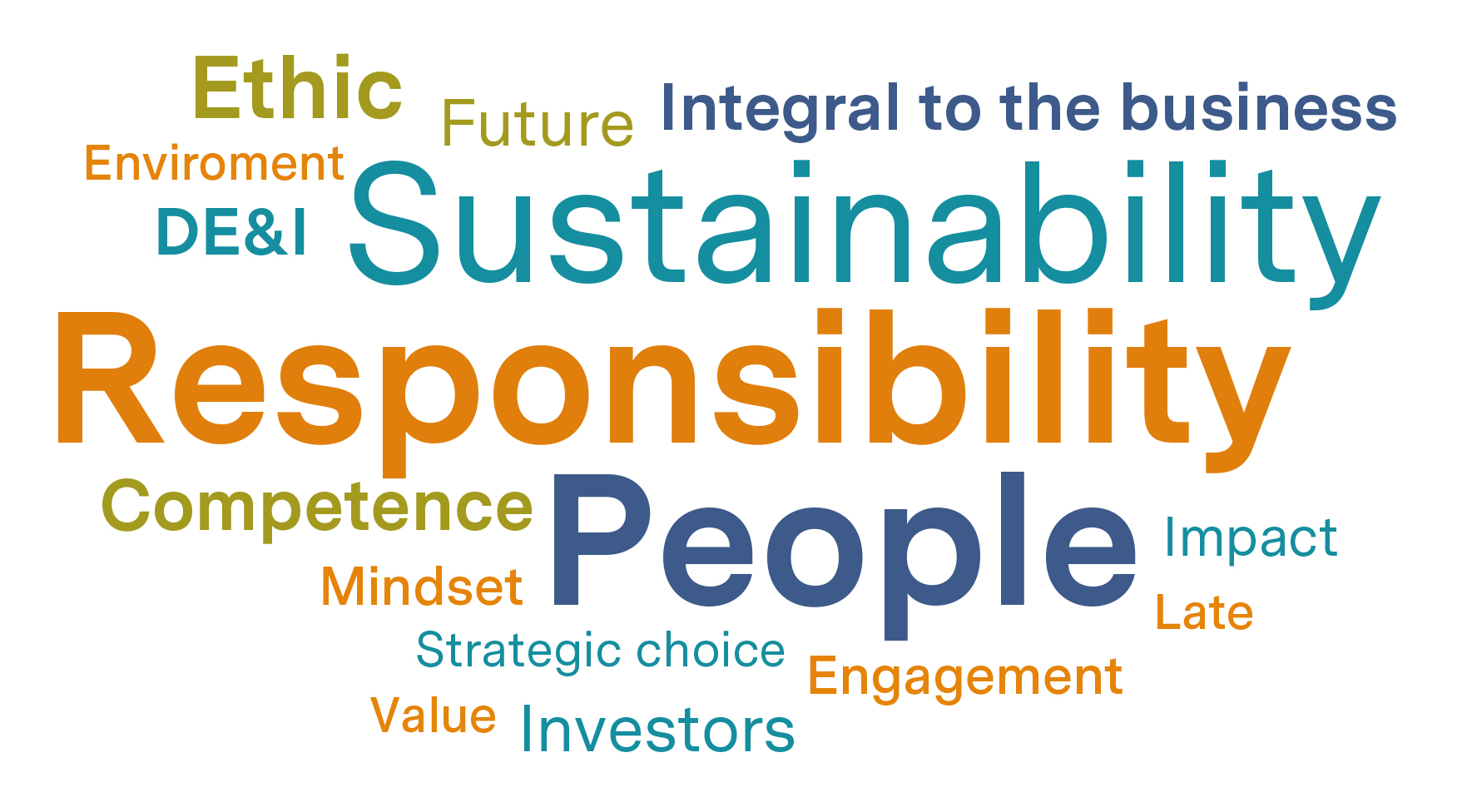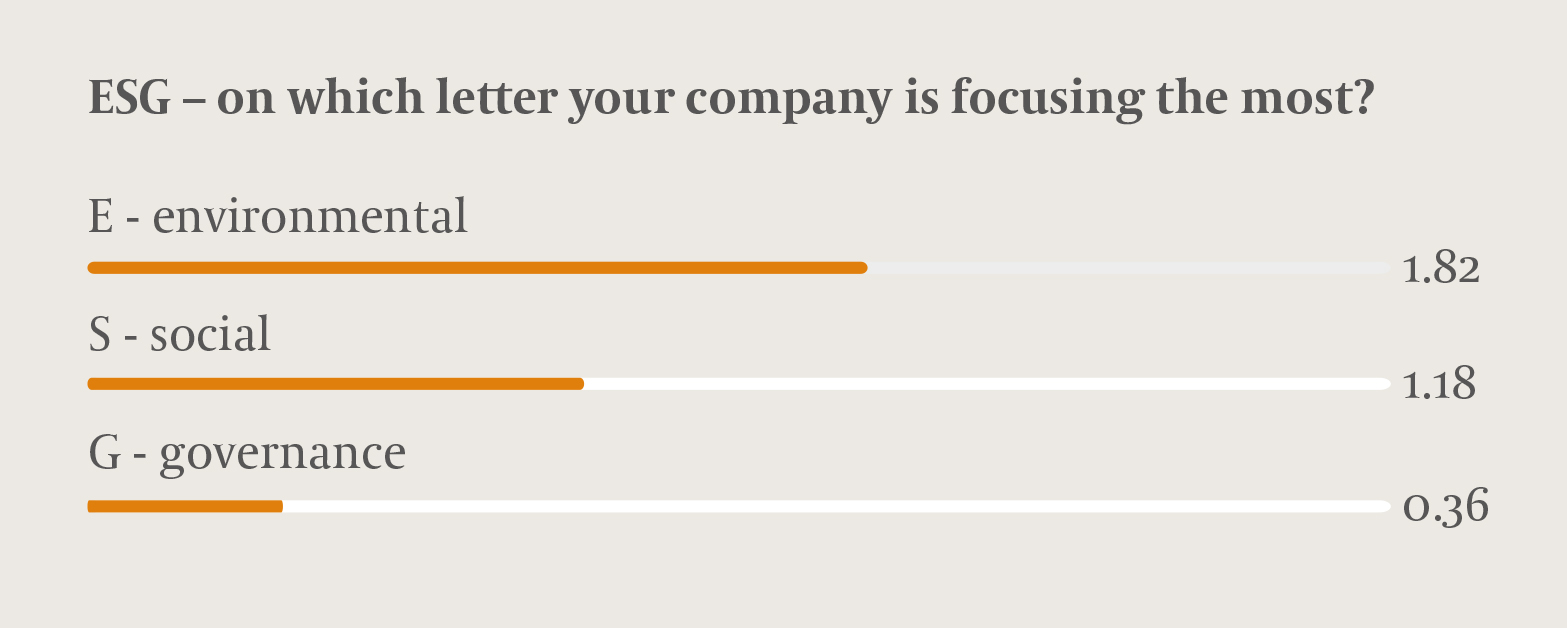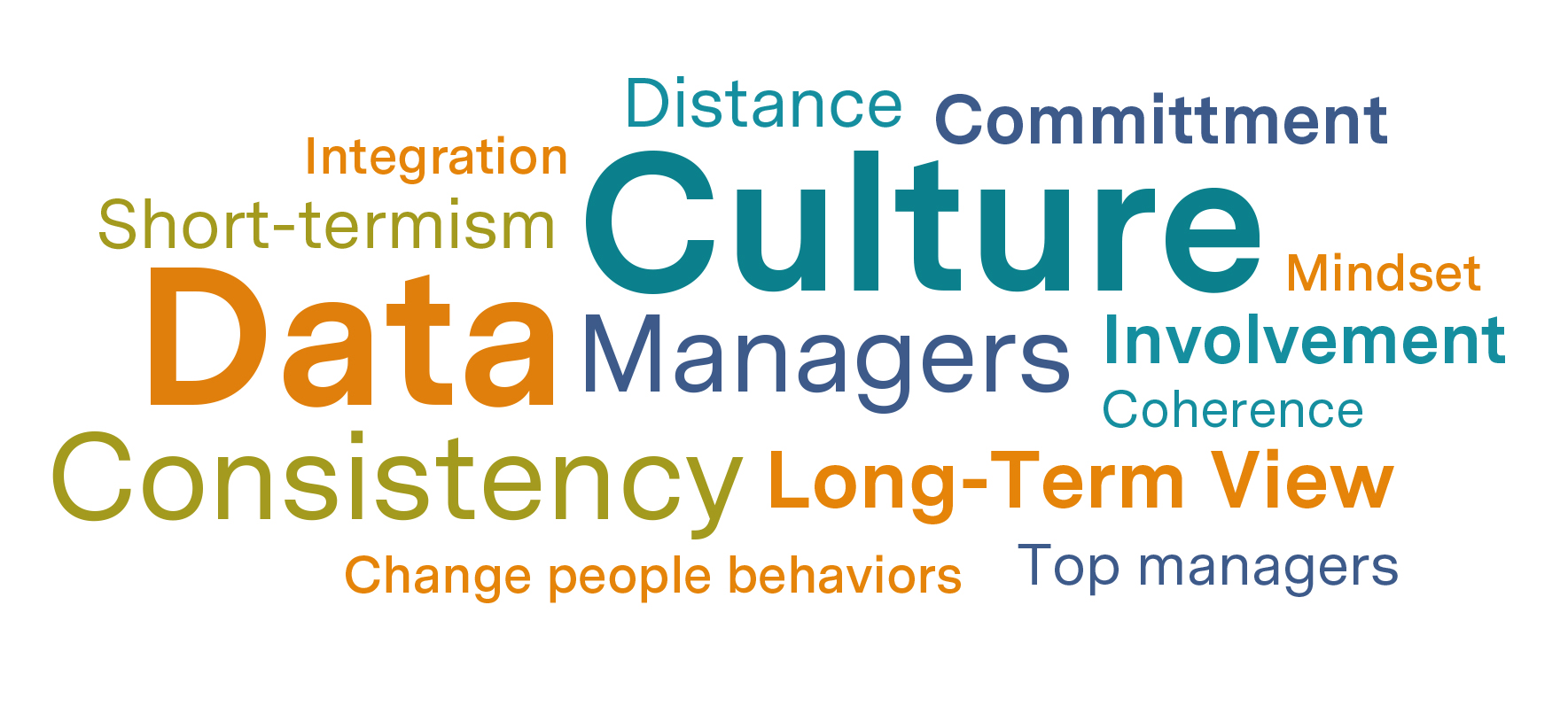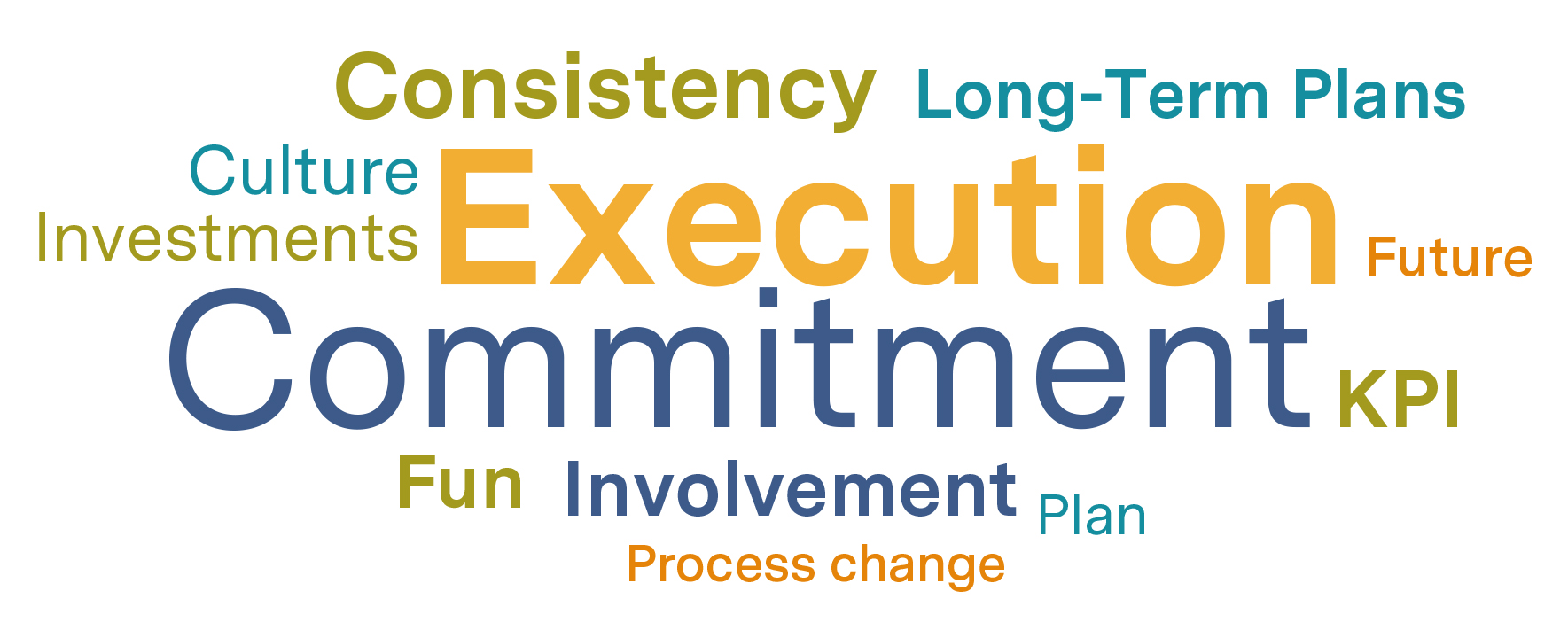In November 2022 Egon Zehnder Italy invited top HR leaders in the Italian business community to discuss how CHROs can take a more active stance in shaping their organizations’ ESG strategy and initiatives.
The discussion was inspired and animated by sustainability experts Bérangère Ruchat, Chief Sustainability Officer at Compagnie Financière Richemont, and Rachael De Renzy Channer, Global Head of Sustainability at Egon Zehnder.
This paper outlines key insights from the gathering, stretching from the broader context and evolution of the ESG concept to the organizational and leadership perspective, in particular and how HR leaders can become sustainability champions supporting organizations in becoming a positive force for our common future.
The Broader Context and the ESG Evolution: From ‘Cherry on Cake’ to Integrated Part of the Core Business
The Broader Context and the ESG Evolution: From ‘Cherry on Cake’ to Integrated Part of the Core Business
Opportunities at the Interconnection of Purpose, Policy and Stakeholder Expectations
Opportunities at the Interconnection of Purpose, Policy and Stakeholder Expectations
Climate and ecological crises, global supply chains, shifts in societal values, a war on European soil, high inflation and a looming recession mark a business environment of huge uncertainty and complexity. At the same time policy makers, investors and consumers alike put increased scrutiny on any companies’ way of doing business and its impact.
So it doesn’t come as a surprise that Corporate Sustainability (Human, Social, Environment, Business Model and Governance) is a top priority for companies across Europe. 10 years ago Corporate Sustainability mainly concentrated on compliance, health & safety, legal, employer branding and philanthropy.
A systematic integration with the core business was not contemplated.
“When you think of the ESG agenda in your organization, what is the first word that comes to mind?”
“When you think of the ESG agenda in your organization, what is the first word that comes to mind?”

Over the following years companies addressed a whole range of topics, in a kind of 360° effort, however with little focus on impact measurement. That changed when materiality became a key concept. It encompasses two relevant perspectives: on the one hand the businesses’ environmental and social impacts (e.g. an airline’s carbon footprint, or labor rights in global fashion supply chains); on the other hand how the business itself is impacted by ESG issues (e.g. risks in global food supply chains due to climate change or loss of biodiversity). Today, materiality helps leaders make informed decisions and set priorities based on the businesses’ very specific risks and opportunities.
This is highly relevant in the wake of new EU regulations, as companies will need to disclose information on the “Why, What and How” regarding their strategy and programs on climate impact, biodiversity, gender equality, human rights in supply chains, just to name a few. Investors want to be informed about ESG-related risks, asking questions about company behaviors along the whole value chain, and, as young talents are particularly interested in the ecological and social impact of business, ESG is also highly relevant for recruiting and retention.
A number of universal or industry initiatives and frameworks, e.g. B Corp, CDP, SBTI, TFCD, GRI, SASB, were developed to support companies define, manage and shape transparency around their ESG strategies and programs. HR leaders at the gathering confirmed that the majority of organizations are closely connecting ESG with their core business model and strategy.
“How connected are your company’s ESG aspirations and your core business model and strategy?”
“How connected are your company’s ESG aspirations and your core business model and strategy?”

ESG: The Organizational Perspective
ESG: The Organizational Perspective
Implementing ESG Is Everyone’s Business as It Impacts Leadership, People & Culture
Implementing ESG Is Everyone’s Business as It Impacts Leadership, People & Culture
The panelists underlined the importance of developing a leadership model that enables organizations to foster the right competencies and align on purpose, values and programs in meeting ESG objectives. Alignment is key as the CEO and the Board set the tone from the top to navigate times of continuous change and complexity. Curiosity, ability to join the dots and adopt a systems thinking approach are fundamental characteristics to develop such leadership.
Managing ESG and Corporate Sustainability¹ is a truly multi-function activity, and its effectiveness strongly relies on leadership skills, on employees’ commitment and on the company’s culture – the core of HR in every organization.
¹ We use the SASB framework to define the components of Sustainability: Environment, Human Capital, Social Capital, Business Model and Innovation, Leadership and Governance
“Effective sustainability leaders focus on orchestrating and liaising teams, encouraging and empowering them to actively engage with ESG priorities.”
“Effective sustainability leaders focus on orchestrating and liaising teams, encouraging and empowering them to actively engage with ESG priorities.”
What elements make the sustainability leaders’ role most effective? The panelists’ experience provides some key evidence: above all, sustainability leaders need to make ESG accessible and not a complex science so that people in the organization understand it is manageable – even if thousands of new policies seem overwhelming (3000 ESG regulations in the EU only).
Due to the broadness and complexity of ESG topics it is clear that multiple competencies are required to deliver. Sustainability leaders collaborating with all functions can encourage and empower others to make things happen. Sustainability teams are instrumental in creating a network of experts and colleagues to drive initiatives. By encouraging an open and fearless work environment, Chief Sustainability Officers must facilitate and speed up the process of meeting ESG goals.
Most Effective Companies Place the CSO (Corporate Sustainability Officer) at the Top of Their Organization, Reporting to the C-Suite.
Most Effective Companies Place the CSO (Corporate Sustainability Officer) at the Top of Their Organization, Reporting to the C-Suite.
Identifying how Sustainability Officers can best impact and influence a company’s modus operandi on the ESG agenda is key. There is no single template that fits all situations regarding organizational structure and reporting line of Sustainability Officers.
Defining and implementing the most effective organizational structure is a key task for HR leaders. Some companies, for example retailers where the interactions with suppliers is key, create joint Chief Sustainability Officers/Chief Purchasing Officers roles. Elsewhere, in highly regulated sectors like financial services, a direct reporting line between the CSO and the CFO is more beneficial due to complex financial regulations. In some leading global companies the CSO reports directly to the CEO to ensure the topic is driven across all elements of the business.
HR leaders play a key role in supporting organizations to move from siloed activity to systems thinking and connecting people with organizational purpose.
CHROs at the Forefront of ESG Transformation
CHROs at the Forefront of ESG Transformation
HR Leaders Foster Sustainability by Actively Impacting and Shaping a Company’s Governance. HR Leaders in Collaboration with the Management Team, Design Ethical, Virtuous and Functioning Organizational Structures.
HR Leaders Foster Sustainability by Actively Impacting and Shaping a Company’s Governance. HR Leaders in Collaboration with the Management Team, Design Ethical, Virtuous and Functioning Organizational Structures.

As we learned from HR leaders, to date the “E” in ESG gets way more attention in organizations than the “S” and the “G” – which suggests there is a lot of space HR leaders can potentially fill in.
Governance is not only about designing and assigning responsibilities and duties, but also about implementing organizational initiatives and activities in compliance with the ESG agenda and creating best practices that impact people’s behaviors. Often times, ESG initiatives are already in place, but the direct contribution to the Sustainability Agenda can be made more explicit to the company’s employees.
Best-in-class examples have shown that in some organizations, in order to accelerate the implementation of ESG programs, each board member and manager across the functions has at least one ESG-related goal in their performance goals/reviews and best practice would include some KPIs in the incentive and bonus schemes. Depending on their role some will naturally contribute more to Social, some more to Environmental aspects, etc.
The panelists also shared insights on how HR leaders can help address potential headwinds for ESG implementation in more effective ways; for example generational issues can hinder organizations from moving quickly on some topics. While some colleagues may emphasize the financial impact of ESG, younger colleagues can be engaged easily from a values perspective. As younger talents became ESG champions, they can facilitate the dissemination of ESG topics and increase integration within the organization itself.
”What is the biggest pain for HR when it comes to dealing with sustainability?”
”What is the biggest pain for HR when it comes to dealing with sustainability?”

Looking Ahead
Looking Ahead
HR Leaders, Together with Chief Sustainabilty Officers, Are the Champions Who Can Build a Frame That Helps Design a Consistent Approach and Get People on Board.
HR Leaders, Together with Chief Sustainabilty Officers, Are the Champions Who Can Build a Frame That Helps Design a Consistent Approach and Get People on Board.
"CHROs can become ESG leaders, not in data, but in joining the dots, and making the case. This is a Human Capital issue, a key dimension of sustainability."
As shared by our panelists, CHROs can foster Sustainability and create tailwinds for ESG implementation. CHROs are key in articulating the organization’s purpose and values reflecting the ESG priorities, including promoting a fearless inclusive culture, attracting and retaining talent, providing learning and coaching opportunities for leaders and experts, sustaining brand credibility and ensuring Sustainability is on top of everybody’s mind by integrating ESG goals into performance goals.
Considering ESG an ‘engine for business for the broader good’, by focusing on the ‘S’ in ESG, CHROs help sustain their organizations’ future fitness and create the foundation for social prosperity and sustainable growth.
"In one word, what would you like to add to your business agenda to support the ESG mission and values in your organization?"
"In one word, what would you like to add to your business agenda to support the ESG mission and values in your organization?"






